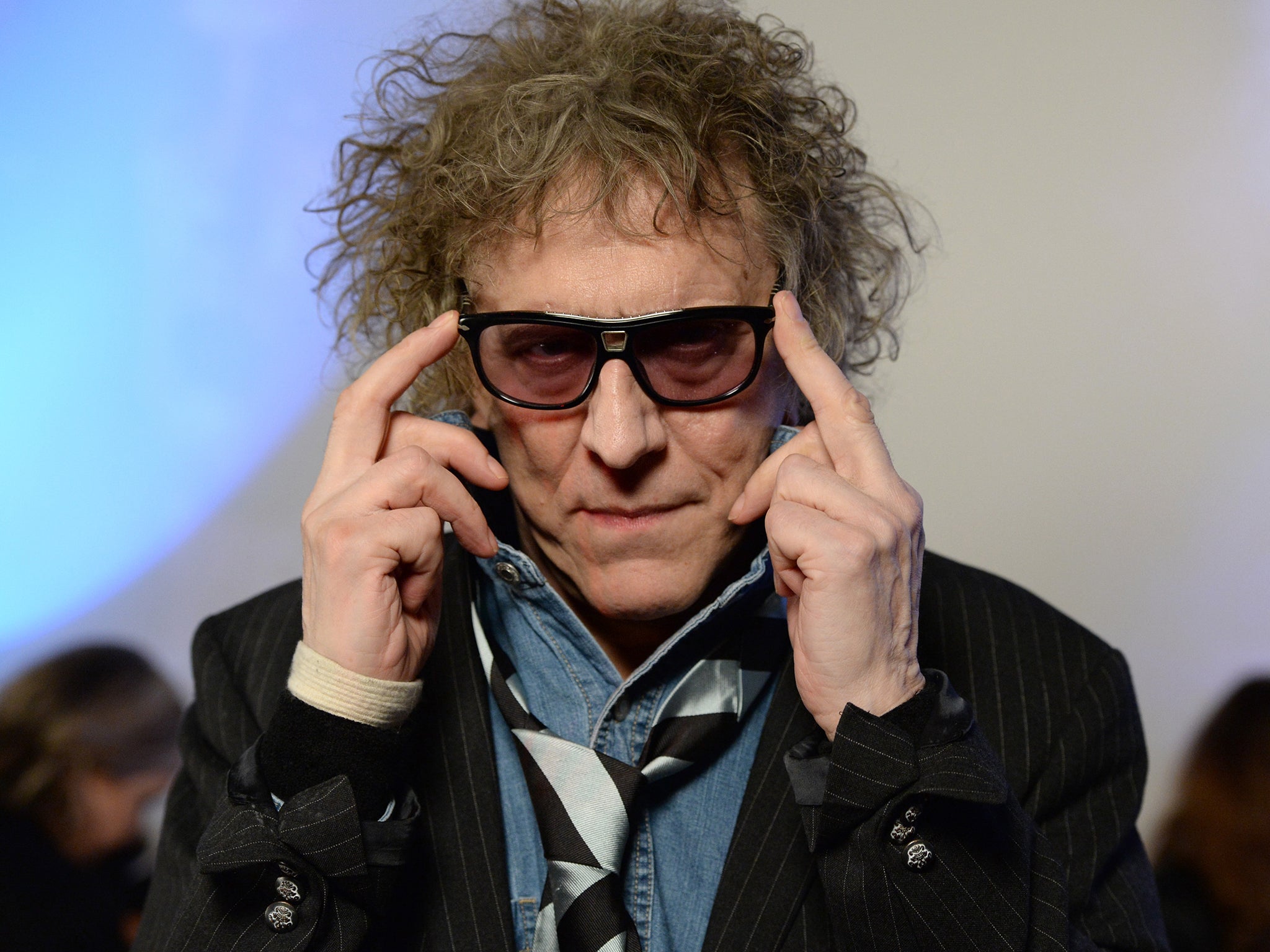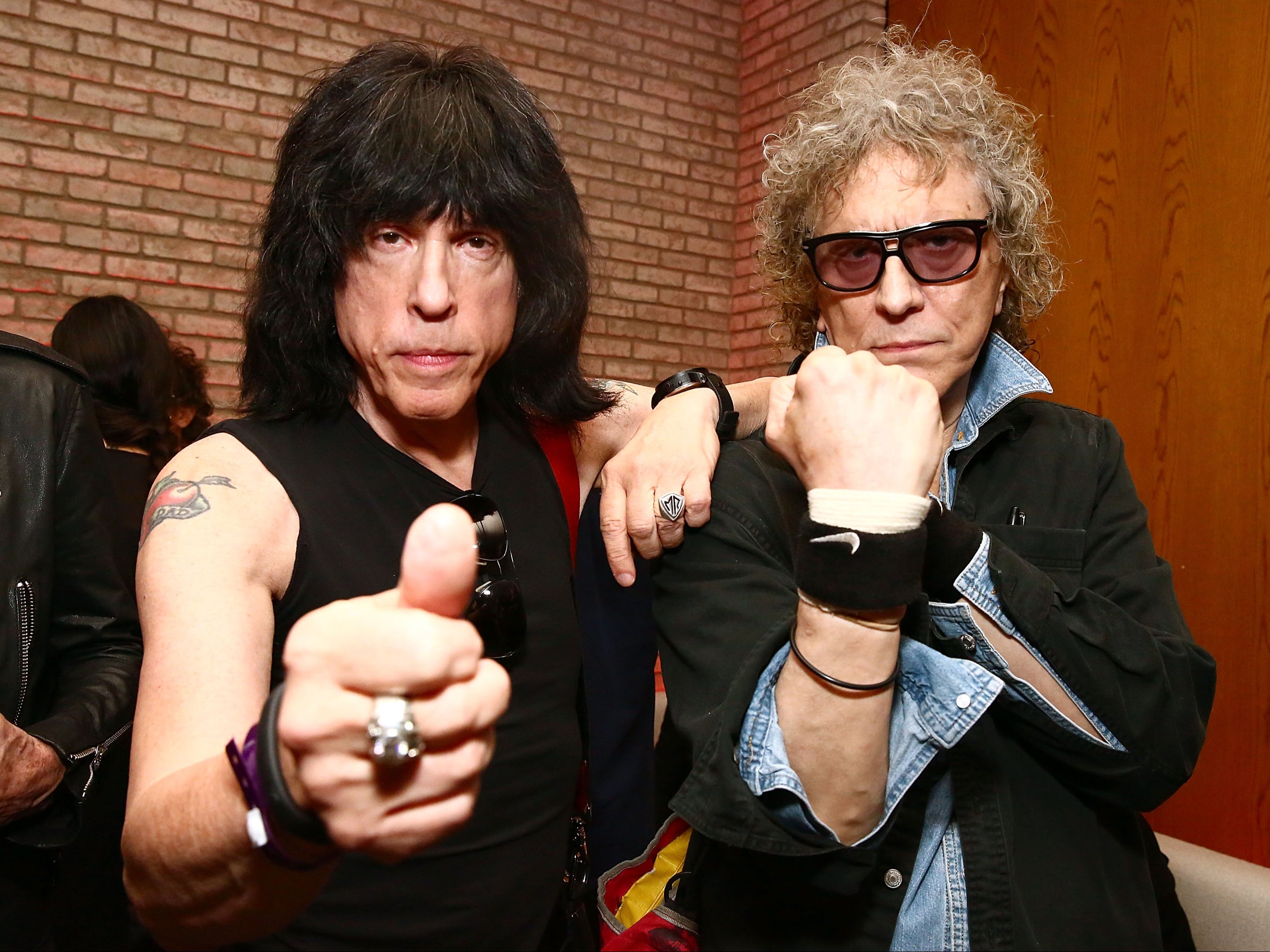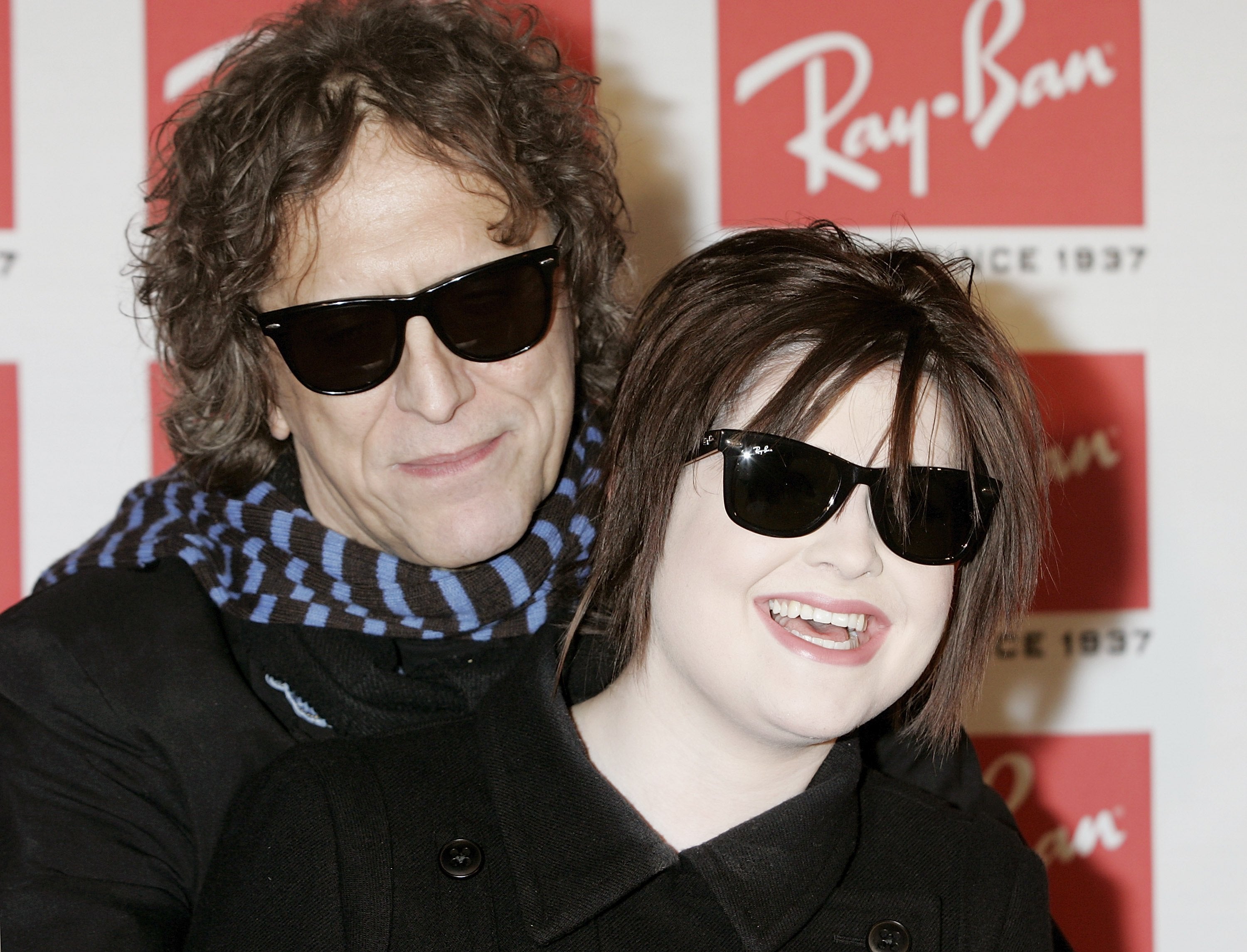Mick Rock: Photographer who created indelible images of music greats
Capturing stars such as David Bowie and Lou Reed, Rock became a permanent fixture on the tumultuous scene

Mick Rock, a British photographer who helped shape the visual identity of rock’n’roll in the 1970s, with indelible portraits of David Bowie, Lou Reed, Iggy Pop and Debbie Harry, has died aged 72.
Rock, often called “the man who shot the Seventies”, became a photographer almost by accident while was a student at Cambridge University in the late 1960s.
“I was at the home of a friend who had all the toys, including a great record player and camera,” he told the New York Post in March. “Sitting around his room, tripping on blotter acid, I picked up the camera and began playing with it.”
Everything about it felt right – the sound of the shutter, the flash of light, the sense of searching for the essence of the person on the other side of the lens. Rock was barely 20 when he took his portraits of a budding rock star, Syd Barrett, a friend who was a co-founder of Pink Floyd.
“He looked like a poete maudit,” Rock told NPR’s Fresh Air, using a term that described an antisocial “accursed poet” in 19th-century France. “He just had that romantic aura about him.”
Early in 1972, Rock met Bowie, then in his androgynous “Ziggy Stardust” period. Bowie had a shock of bright red hair, wore elaborate make-up and outfits, and projected an air of glamour, danger and sexual ambivalence.
One of their first portrait sessions took place, improbably enough, in Bowie’s infant son’s bedroom. Rock recognised in Bowie a near-perfect subject: he had a beautiful face and a powerful persona that Rock considered the essence of rock’n’roll.
“Remember they are often called an ‘act’ – and it’s for a reason,” Rock told the Staten Island Advance in 2009. “They have to become the character they have created to project their music, their art – something bigger than life. Even I go through a change and become this rather raucous and very high-key character, ‘Mick Rock’, when I take photos.”
Rock was Bowie’s personal photographer for several years, and the two became close friends. Bowie introduced him to other rising figures in the rock world, including Reed and Pop. Rock captured memorable images of both, including some black-and-white shots of Reed performing in London.

While Rock was developing the photos, they went slightly out of focus. One picture, showing Reed peering out, while wearing eye make-up and holding his guitar, became the cover art for his 1972 album Transformer. It became, in many ways, the defining image of Reed.
“For the rest of his career, he was haunted by that particular shot,” Rock said in 2016. “A lot of people don’t even think that’s a performance shot because it’s a very quiet shot.”
About the same time, Rock photographed a gaunt, shirtless Pop holding the microphone in both hands and looking pensively into the audience. That image became the cover of Pop’s 1973 album Raw Power.
In 1974, Rock made a group portrait of the rock band Queen, showing their faces in stark shadows as lead singer Freddie Mercury crossed his hands over his chest. The photo, which appeared on the cover of the album Queen II, was modelled after a movie still Rock had seen of Marlene Dietrich in the 1932 film Shanghai Express.
Rock went on to photograph dozens of rock musicians, including the Ramones, the Sex Pistols, Joan Jett and Blondie’s Debbie Harry, whom he called “the most naturally photogenic person I’ve ever shot”. In 1975, he shot still photographs on the set of the cult classic film The Rocky Horror Picture Show.
Rock moved to New York in 1977 and, for years, was a fixture in the rock’n’roll world, indulging in the sex and drugs that went with it.

“I was not an outsider,” he told NPR. “This was my life, too. I mean, I didn’t play an instrument, but I lived the life.”
He gave up drugs and cigarettes in 1996, after undergoing quadruple heart bypass surgery. Soon afterwards, his photography began to be recognised as fine art and was featured in exhibitions, including at Govinda Gallery in Washington. He published a series of books.
“My camera was the key to being part of the glammy and punky stuff,” Rock told the Daily Mail in 2017. “I never reflected on what I was doing. I still shoot today because that is the bit I love most. It’s like a hit song – I still want to produce a picture that people will come back to again and again.”
Rock was born on 22 November 1948, in London. Little is known of his early life, and even his name is in doubt. He usually said his given name was Michael David Rock. But in a 2017 online interview, he said that he was named Michael Edward Chester Smith for the first two years of his life and that he was born after his mother had an affair with an American airman.
In 1970, after completing his studies in modern languages and literature at Cambridge, Rock moved to London. He had an early marriage that ended in divorce. In addition to photographing musicians, he also wrote liner notes and contributed to Rolling Stone and other music publications.
In 2015 and 2016, Rock had a cable TV series, On the Record with Mick Rock, in which he interviewed musicians. A documentary about his life, Shot! The Psycho-Spiritual Mantra of Rock, directed by Barney Clay, was released in 2017.
Rock lived for many years on Staten Island with his wife, Pati Rock, and their daughter, Nathalie, who survive him.
Rock remained an active photographer and was not slowed by a kidney transplant in 2012. His subjects in recent years included Lady Gaga, Snoop Dogg, the Foo Fighters and Pharrell Williams. Last year, he shot the cover art for Miley Cyrus’s new album, Plastic Hearts.
“I am in the business of evoking the aura of the people and photographing,” Rock told the BBC in 2007. “I’m not necessarily looking for a literal reality; I’m looking for something that’s got a bit of magic to it, and quite where that comes from or when that moment is you can’t prescribe.”
Mick Rock, photographer, born 22 November 1948, died 18 November 2021
© The Washington Post

